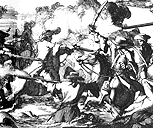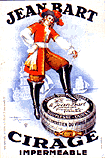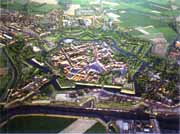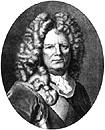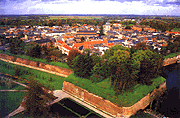|
|
|
|
William
of Orange |
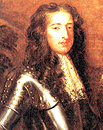 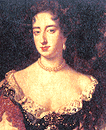 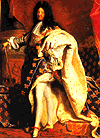 Dutch Prince William of Orange became the English king William III after the 'Glorious Revolution' in 1688; he and his wife, Mary, were cousins - both grandchildren of English king Charles I. William is pictured in armour - he was one of the last English monarchs to lead his troops in battle (the last was George II fighting the French at Dettingen in 1743). William was a life-long opponent of French king Louis XIV (right), and won his grudging respect as a most able general and diplomat. |
The Man who shaped the
frontier As "stadholder" - chosen ruler of the Dutch republic - he organised and led their army to make it an effective fighting force against the French - saving Holland's hard-won independence (finally recognised in 1648 after 80 years of fighting) |
|
|
Anti-French Alliances |
|
Battle tactics in the 17th
century |
|
When he became king of England, William
was already an experienced battle-hardened general from
years of fighting in Flanders. He brought in foreign
soldiers, and set about reorganising the English army to
fight the threat from France. Despite Parliament's
reluctance, it was the first time that England kept a
standing army - the Bank of England was started to lend the
government money to pay for the expensive wars against the
French. |
|
Sea battles |
|
|
East of Brest, France had no harbour capable of taking large battleships - only small ports which were too shallow at low tide. If the French fleet ventured into the Channel, a west wind would give them no refuge in French territory until Dunkerque. The English fleet had naval bases at Plymouth, Portsmouth and Chatham. So French admirals were reluctant to bring the fleet into the Channel. In 1690, they did so while William was busy in Ireland with the army and part of the fleet. An inconclusive French victory in the battle of Beachy Head caused great alarm in London. |
|
|
In 1692 the fleets met again at La Hogue, off the Normandy coast. This time,Louis had an army ready but the English and Dutch had twice as many ships. After a week of fighting within range of French shore batteries, the French fleet was defeated.After that Louis XIV laid up his battleships, and concentrated on land campaigns. French seamen were encouraged to join fleets of privateers - smaller boats based in the Channel ports. English battleships could not prevent these swift "pirates" - like the famous Jean Bart -raiding Dutch and English shipping in the North Sea and down the Channel - they caused great disruption. |
|
|
Defensive fortifications - Vauban |
|
|
Most towns in Flanders had walls from the Middle Ages. So many were besieged in the fighting between France, Spain and Holland that more elaborate fortifications were built to help them withstand "modern" weapons. Country people in the region were used to being driven from their cottages to huddle in a besieged town, while the attacking army looted their farms. In the town they faced death by starvation, fire or cannonball - unless their own forces came to relieve them in time. |
|
|
|
Settling France's northern
border There had already been discussions about splitting up the Spanish Empire: Louis realised that the rest of Europe did not want Spain to be merged with France, and France could not afford more wars. But William died in 1702, and the "War of the Spanish Succession" ended in 1713 with the French withdrawing to more-or-less the present borders, and Austria taking over what was left, apart from the Dutch republic. The alliance which William put together had finally succeeded in securing Dutch independence, and limiting the expansion of France in the north. |
|
Places to
visit: |
|
|
|
Related background
information |
|
|
|
|
|

 Contemporary
English pamphlet welcoming a replacement for the unpopular
catholic king James II
Contemporary
English pamphlet welcoming a replacement for the unpopular
catholic king James II